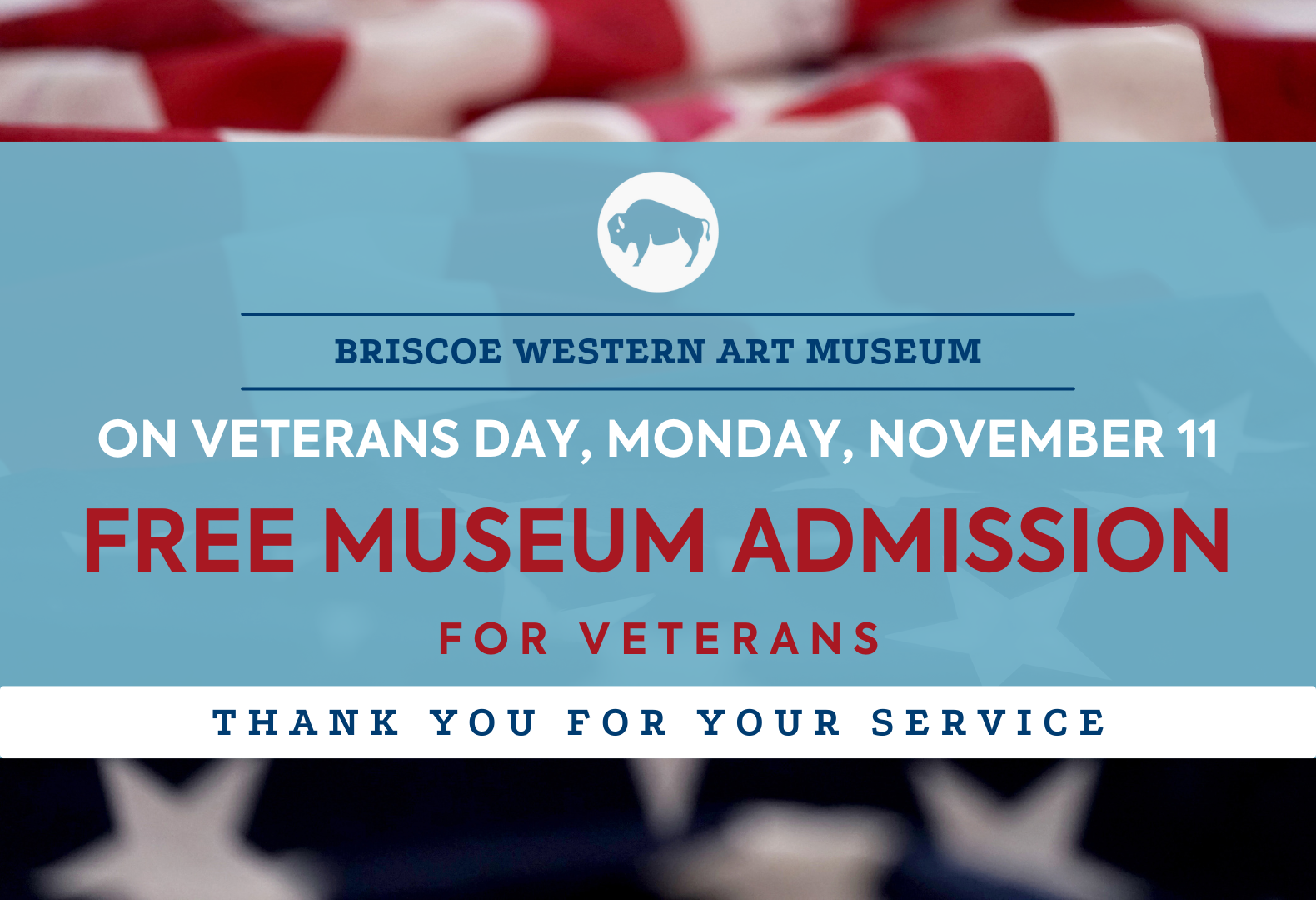Highlights from the Marrs McLean and Marianne Bowman Collection
Ruth McLean Bowman Bowers was a passionate advocate for her community—devoting herself to causes that championed equality of access, women’s rights, and the advancement of the arts and sciences in San Antonio, South Texas, and beyond. As a trained artist, dedicated collector, and patroness of the visual arts, Ruth’s legacy has lived on through her children and grandchildren.
In celebration of this legacy, on view are a number of works from the private collection of Mr. Marrs McLean Bowman, and his wife, Marianne. Mr. Bowman’s love of art was encouraged by his mother and informed by his upbringing as an outdoorsman, hunter, and lifelong Texan. Drawn to art that depicts the rich history of the American West, Bowmans’ collection represents some of the premier artists working at the turn-of-the-century and an opportunity to view works that have rarely been shown to the public.

Untitled [Plains Indian Portrait], 1898
Watercolor and graphite on paper
On loan from Marrs McLean and Missie Bowman
From 1898 to 1903, Russell produced at least three dozen Native American portraits from Plains Indian tribes. Many of these likenesses were based on photographs taken by L.A. Huffman of Miles City, Montana and O.S. Goff of Bismarck, Dakota Territory. His efforts may have been inspired by artists Joseph Henry Sharp and E.A. Burbank, who received publicity and patronage as they crisscrossed the West to paint portraits of the “vanishing races.” This was the first artwork that Mr. Bowman purchased for his collection from the Kennedy Galleries in New York, where he often visited with his mother.

The Day is Done, 1911
Oil on canvas
On loan from Marrs McLean and Missie Bowman
In this wintry, camp scene, Farny uses the verticality of the canvas to emphasize the steep and remote mountain landscape. Nestled in the shelter of a large rock, three lone hunters keep warm by a fire, their snowshoes and guns resting nearby the large buck they shot—the blood still fresh from its mouth. Farny first traveled to the American West in 1881, spending time near present day North Dakota. He returned West again in 1883 and 1884 and continued to regularly visit until his last trip in 1894. During his trips, he gathered visual references and artifacts to use back in his Cincinnati studio, in order to recreate the scenes and events he witnessed.

Church of Maravatio, Mexico, 1905
Oil on canvas
On loan from Marrs McLean and Missie Bowman
Moran traveled to Mexico in 1883, likely at the invitation of the Mexican National Railroad. Maravatio was one of the cities on the line. During his trip, Moran produced nearly one hundred field studies and watercolors that would serve as the basis for later works, including this one from 1905. Here, Moran highlights the San Juan Bautista parish church, which was built in 1590 by the Franciscans. Born in England, Moran moved with his family to Philadelphia, where he came an apprentice to an engraver. He later studied under his brother Edward and local artist James Hamilton. Moran made his first trip West in 1871, on the F.V. Hayden expedition to Yellowstone, where he gained national attention for his monumental works of the area’s breathtaking scenery.

Indian Scout, 1895
Watercolor and graphite on paper
On loan from Marrs McLean and Missie Bowman
At a time when life in the western United States was rapidly changing, Charles M. Russell dedicated himself to chronicling its passing. Born in St. Louis, Missouri on March 19, 1864, Charles Marion Russell was raised on stories of the frontier and the open range. At sixteen, he moved to Montana Territory and made a living as a working cowboy for eleven years. He eventually settled in the city of Great Falls, pursuing a career as a fine artist, painting historic scenes as well as contemporary works of the people and landscape he loved.

Wash Day, n.d.
Oil on canvas
Loan courtesy of the Jack and Valerie Guenther Foundation, L2021.03
New to the Mezzanine Gallery replacing Tom Lovell’s U.S. Dragoons in Texas 1851.

Battery of U.S. Field Artillery Going Into Action, n.d.
Oil on canvas en grisaille
Gift of the Jack and Valerie Guenther Foundation
A founding member of the Taos Society of Artists, William Herbert Dunton was a master draftsman. Battery of the U.S. Field Artillery Going Into Action captures his favorite subject with painstaking detail: cowboy on horseback in the vast open spaces of the West. The energetic oil showcases the exaggerated movement of the horses kicking up dust and the riders’ whips raised high in the air as the team of horses rounds a bend on the trail. Dunton’s interest in detail is illustrated in the musculature of the horses that are strapped with U.S. Army issued McClellan Saddles.
BECOME A MEMBER
Help us bring the spirit of the West alive by becoming a Briscoe Partner!
Click here to become a member!
SUPPORT THE MUSEUM
Governor Dolph Briscoe and his wife Janey envisioned a Museum that would preserve the stories and traditions of the American West.



































